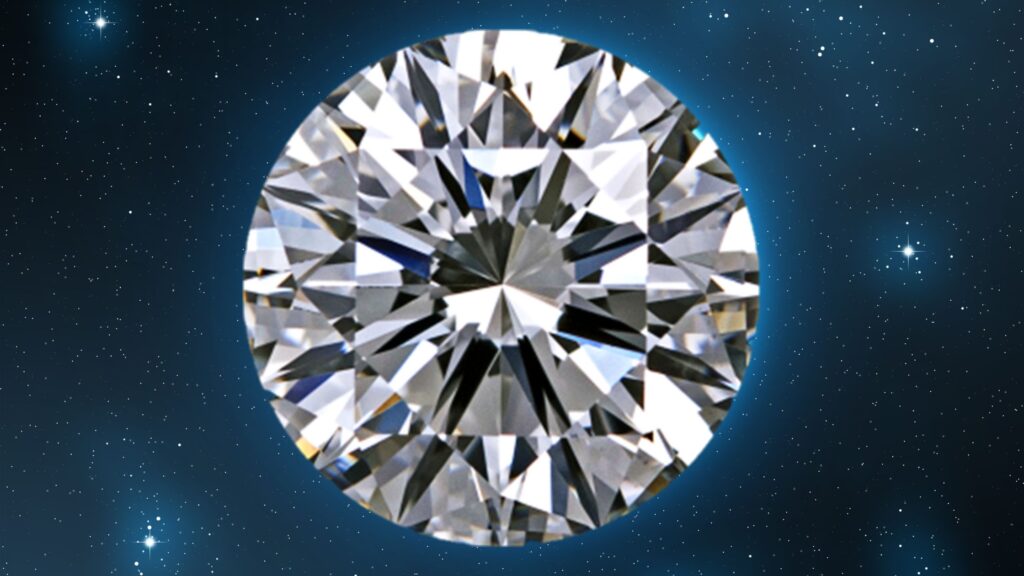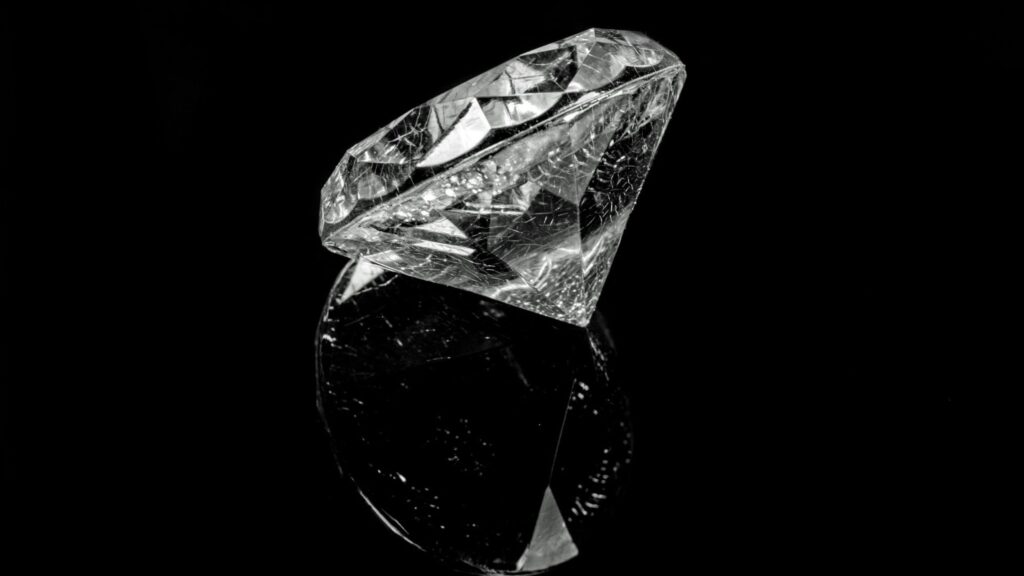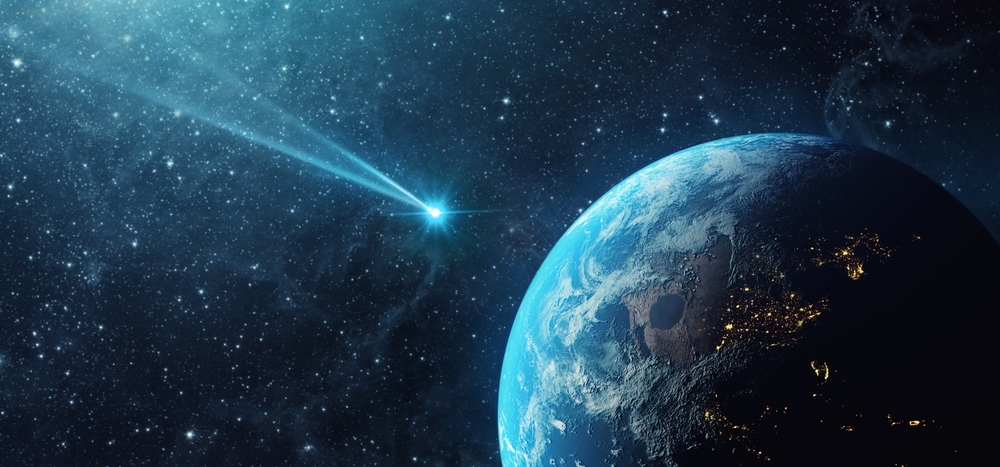Your cart is currently empty!
Nasa Found A Diamond In Space That Is 5 Times Bigger Than Earth!

In the vast expanse of space, where mystery and wonder collide, NASA has uncovered a discovery that seems straight out of a science fiction novel: a planet made almost entirely of diamond. But this isn’t just any planet—this sparkling celestial body is five times larger than Earth. Known as PSR J1719-1438b, it raises intriguing questions about the very nature of planetary composition and the forces that shape worlds. What does this stunning find mean for our understanding of the universe? Is this diamond planet truly one of a kind?
What Is PSR J1719-1438b?
PSR J1719-1438b is not your typical planet. In fact, it wasn’t always a planet at all. Scientists believe it was once a part of a star, a giant ball of gas and energy. However, over time, its outer layers were stripped away by a powerful neutron star, which is also known as a millisecond pulsar. What remained was a dense, carbon-rich core that, under immense pressure, transformed into what we now recognize as a planet made almost entirely of diamond.

Located far from Earth, PSR J1719-1438b sits around 4,000 light-years away in the Milky Way galaxy. This extraordinary planet is an example of how extreme conditions in space can lead to the creation of something entirely unexpected—something much more dazzling than anything we’ve seen here on Earth. Instead of the familiar landscapes of rock and water, this planet’s surface is a shimmering expanse of carbon-based structures, likely including diamond.
This discovery challenges our understanding of how planets form and evolve, proving that the universe is full of surprises, where even stars can give way to glittering worlds made of gems. But the story doesn’t end here—there’s much more to uncover about how PSR J1719-1438b came to be, and why it is so unlike anything we’ve known.
How Big Is It?

PSR J1719-1438b is a true giant in the realm of exoplanets. To put its size into perspective, this diamond planet is five times the size of Earth. Imagine a world far larger than our own, with a mass and radius that dwarf anything we’re familiar with. While Earth is already a big place, PSR J1719-1438b takes the concept of size to a whole new level.
Not only is it larger, but it’s also denser. The core of the planet, packed with carbon, has undergone such extreme pressure that it’s transformed into diamond. This makes the planet not just massive, but incredibly unique in terms of its composition. With its massive size and diamond-laden structure, PSR J1719-1438b challenges our assumptions about how planets can form and what they can look like.
In comparison to some other known planets, PSR J1719-1438b is enormous—particularly when we consider that Earth itself is already a planet that houses vast oceans and towering mountains. Yet, on this distant world, the surface might be nothing more than a glittering expanse of carbon formations, a sight that could make even the most dazzling jewels on Earth look ordinary.
What Makes It So Special?

PSR J1719-1438b is a rare and extraordinary planet for several reasons, but perhaps the most remarkable feature is its composition. Unlike Earth, which is made primarily of rock and water, this distant planet is believed to be made almost entirely of diamond. How does a planet come to be made of such a precious material? The answer lies in the extreme conditions it underwent.
Once part of a star, PSR J1719-1438b’s outer layers were stripped away by a powerful neutron star, leaving behind a core composed largely of carbon. Over time, the immense pressure from the remaining mass caused the carbon to crystallize into diamond, forming a planet with a surface that could potentially shimmer with diamonds. In essence, this planet is a giant cosmic gem—a far cry from anything we experience on Earth.
What’s more, PSR J1719-1438b isn’t the only diamond planet out there. But its size—five times larger than Earth—sets it apart from others like 55 Cancri e, another diamond-rich planet, making it an even more unique specimen for astronomers. The discovery of a planet that is essentially a diamond challenges our conventional understanding of how planets form, pushing the limits of what we thought was possible in the cosmos. It also brings about new questions about planetary evolution and the forces that shape worlds far beyond our own.
How Does This Discovery Change Our Understanding?

For years, scientists have operated under the assumption that planets like Earth—rocky, water-rich, and capable of sustaining life—are the standard. But PSR J1719-1438b challenges this view in a big way.
First, the discovery forces us to reconsider what a planet can be made of. Traditionally, planets form from a mix of dust, gas, and other cosmic materials that eventually come together to create rocky or gaseous bodies. But PSR J1719-1438b’s composition is anything but typical. This planet isn’t just rocky—it’s a diamond, forged under extreme pressure, leaving us to ask: Are there other planets out there with similar characteristics? Could planets made of other materials, like gold or other precious metals, exist in the far reaches of space?
Moreover, the fact that PSR J1719-1438b was once part of a star and then transformed into a diamond planet after being stripped of its outer layers by a neutron star adds a new layer to our understanding of how planets evolve. Instead of the familiar process of rocky bodies gradually coalescing in a solar system, this discovery reveals that catastrophic events, like the interaction between stars and neutron stars, could give birth to planets of entirely unexpected compositions.
Comparing It to Other Diamond Worlds

While PSR J1719-1438b is an extraordinary discovery, it’s not the only diamond-like planet in the universe. Another fascinating example is 55 Cancri e, a super-Earth located about 41 light-years away. Like PSR J1719-1438b, 55 Cancri e has also garnered attention for its potential diamond composition, but there are some key differences that set these two planets apart.
55 Cancri e, for instance, is a planet much closer to its parent star, orbiting at an incredibly fast pace—just 17 hours for a complete orbit. This proximity to its star subjects it to extreme heat, with surface temperatures soaring to about 2,400 degrees Celsius. The intense heat might cause parts of the planet’s surface to melt, potentially influencing the formation of diamonds and graphite. Scientists believe a third of 55 Cancri e’s mass could consist of diamonds, which could make its surface look like a glittering, molten jewel.

In contrast, PSR J1719-1438b is unique because it formed from a star that was stripped of its outer layers by a neutron star. This process led to a core made almost entirely of carbon, which under pressure transformed into diamond. While 55 Cancri e’s high temperatures and proximity to its star might help facilitate diamond formation, PSR J1719-1438b’s creation story is more about the cosmic forces that shape planets in the wake of stellar death.
Although both planets share a striking diamond-like composition, their origins and environments are distinct. PSR J1719-1438b stands out due to its size—five times larger than Earth—while 55 Cancri e, though still massive, is only twice the size of Earth.
A Glimmer of the Universe’s Mysteries
The discovery of PSR J1719-1438b, a diamond planet five times the size of Earth, is not just a scientific marvel—it’s a glimpse into the boundless mysteries of the universe. This cosmic gem challenges our traditional views on planetary composition, forcing us to rethink the materials that can make up a planet and how they come to exist. Whether it’s the extraordinary process that turned a star’s leftover core into a glittering world of diamonds or the strange formation of similar planets like 55 Cancri e, these discoveries remind us just how little we truly know about the vast expanse beyond our own world.
As we continue to look up, who knows what other unexpected wonders are waiting to be uncovered? One thing is for certain: the universe is far more diverse, surprising, and dazzling than we could ever imagine.
